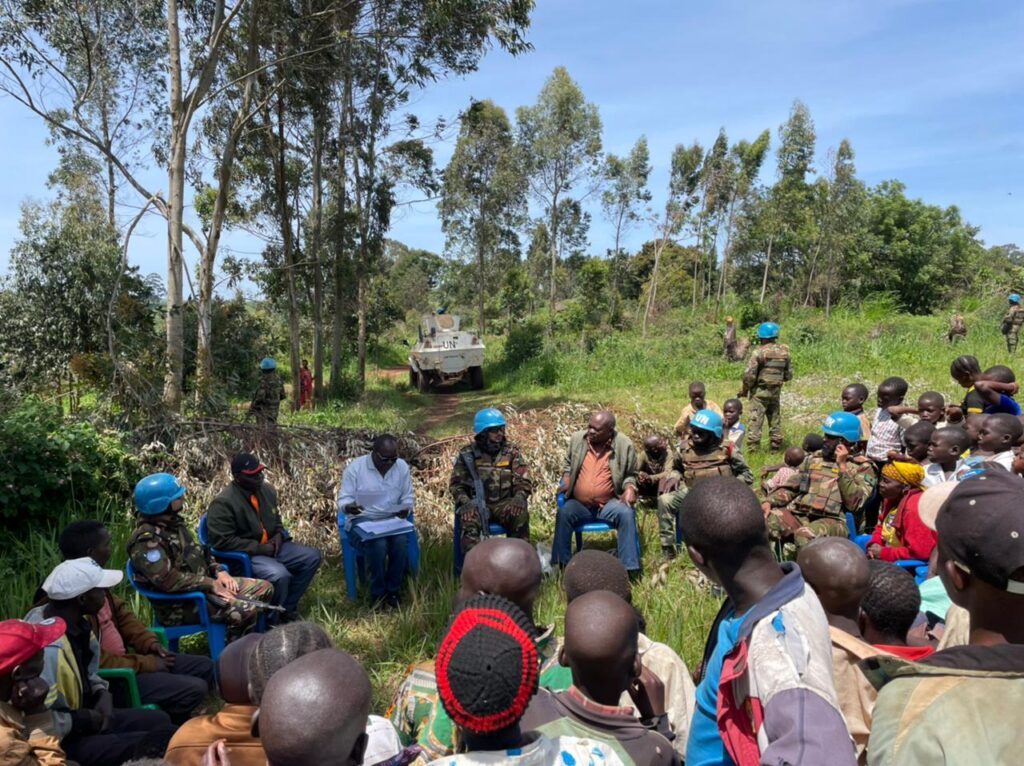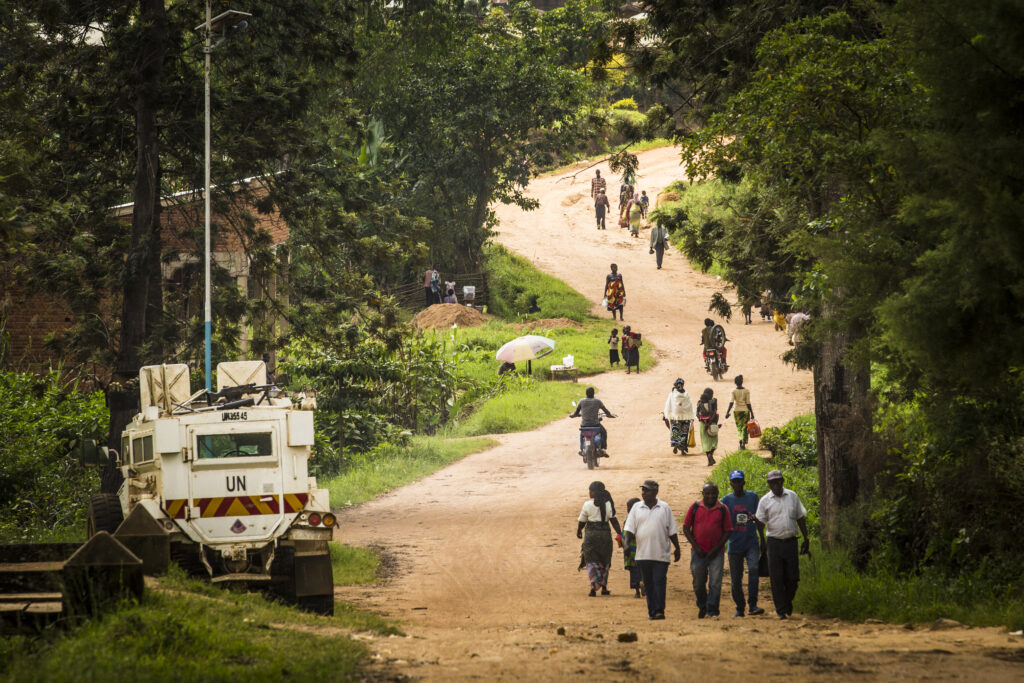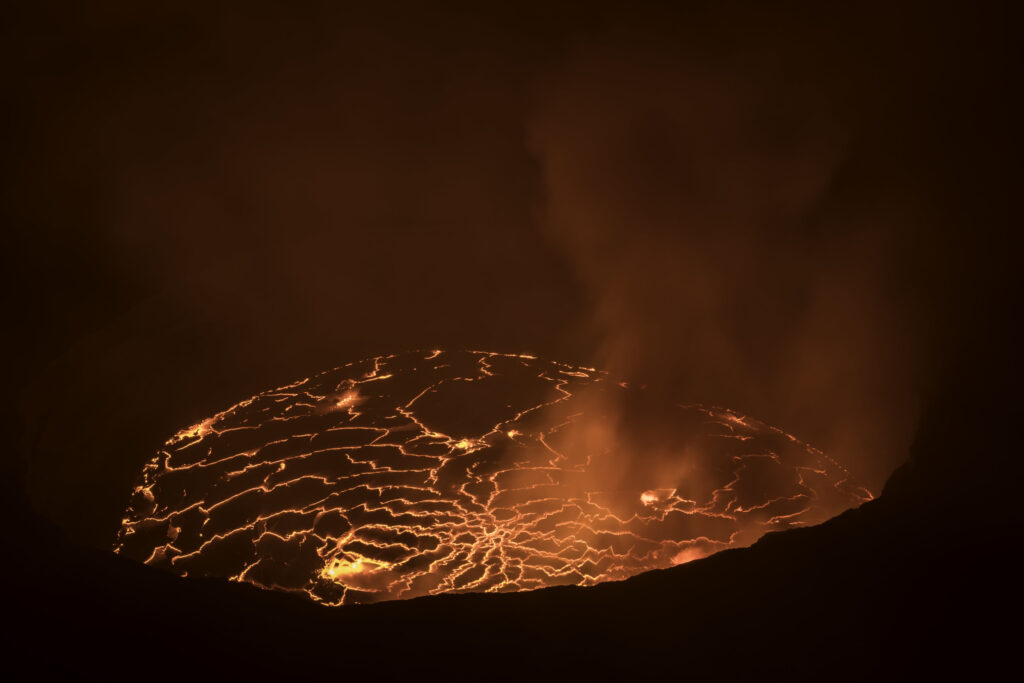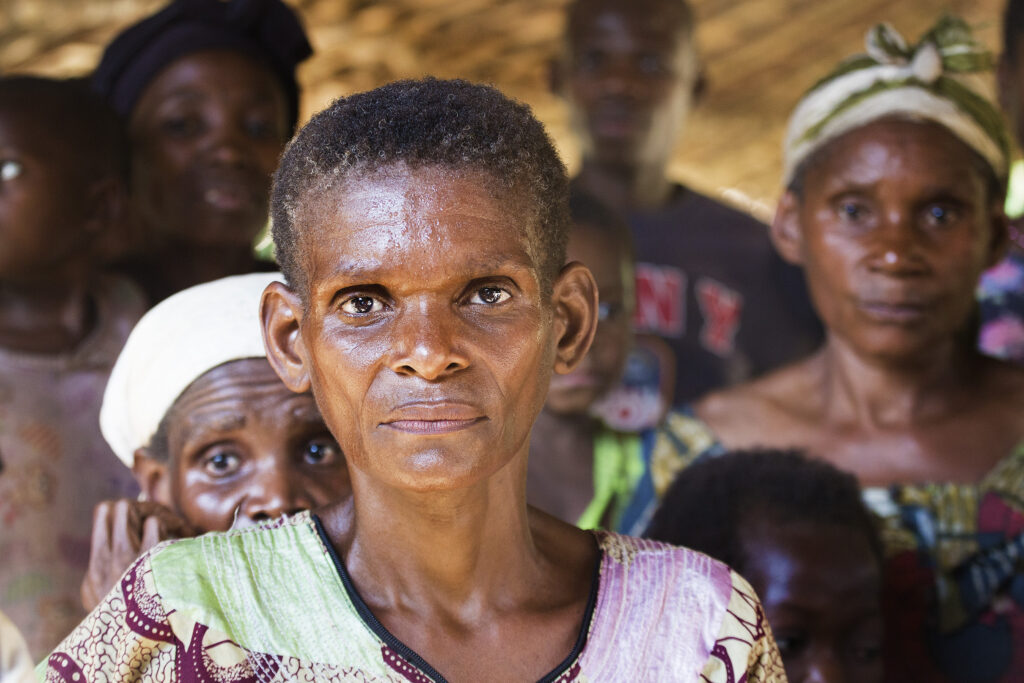Quick facts about Democratic Republic of the Congo (DRC):
- Population: Approximately 110 million people.
- Capital: Kinshasa.
- Official Language: French.
- Other Languages: Several indigenous languages are spoken, including Lingala, Kikongo, Tshiluba, and Swahili.
- Currency: Congolese Franc (CDF).
- Government: Semi-presidential republic.
- Major Religion: Christianity (predominantly Roman Catholic, with a significant Protestant population), along with indigenous beliefs.
- Geography: Located in Central Africa, the DRC is bordered by nine countries: Uganda, Rwanda, Burundi, Tanzania, Zambia, Angola, Namibia, and the Republic of the Congo. It features diverse landscapes, including rainforests, savannas, and the Congo River, which is one of the longest rivers in the world.
Fact 1: The Democratic Republic of Congo is not exactly democratic
The Democratic Republic of the Congo (DRC) has faced significant challenges in establishing a stable and democratic governance system. Despite its name, the DRC has been plagued by a history of authoritarian rule, corruption, and ongoing political instability. The country gained independence from Belgium in 1960, but shortly thereafter, it was plunged into turmoil, including the assassination of its first prime minister, Patrice Lumumba.
Since then, the DRC has experienced prolonged internal conflicts, particularly the First and Second Congo Wars (1996-2003), which resulted in millions of deaths and widespread human rights abuses. Although a transitional government was established following the wars, political tensions remained high, and elections have often been marred by allegations of fraud and violence. The most recent presidential election in December 2018, which resulted in the first peaceful transfer of power in nearly 60 years, was overshadowed by concerns over the electoral process and allegations of irregularities. The ongoing conflicts in the eastern regions of the DRC, driven by the struggle for control over valuable mineral resources and fueled by armed groups

Fact 2: There are 2 countries in the world with the name Congo
The name “Congo” originates from the Congo River, one of the largest rivers in Africa, which flows through several countries in Central Africa, including the Democratic Republic of the Congo (DRC) and the Republic of the Congo. The river itself was named after the Kongo people, an ethnic group that historically inhabited the region around the river’s mouth.
When the two countries emerged from colonial rule in the mid-20th century, they adopted the name “Congo” to reflect their geographical and historical connection to the river. The Republic of the Congo, also known as Congo-Brazzaville, is located to the west of the river, while the Democratic Republic of the Congo, or Congo-Kinshasa, lies to the east. This dual naming can sometimes lead to confusion, but the river serves as a significant natural boundary and cultural link between the two nations.
Fact 3: DRC is the largest francophone state and has a bloody history
The Democratic Republic of the Congo (DRC) was the personal domain of King Leopold II of Belgium from 1885 until 1908, a period marked by extreme exploitation and human rights abuses. Under Leopold’s rule, the region was known as the Congo Free State, where he sought to extract rubber and other resources with little regard for the well-being of the local population. Millions of Congolese suffered from forced labor, violence, and disease, leading to a dramatic decline in the population. Estimates of the death toll during this period vary widely, with some suggesting that up to 10 million people may have perished due to the brutal policies.
In 1908, international outrage over these atrocities forced Belgium to annex the Congo Free State, transforming it into the Belgian Congo. However, colonial exploitation continued until the DRC gained independence in 1960.
Today, the DRC is recognized as the largest Francophone country in the world by population, with French as the official language. Despite its challenges, the DRC’s vast natural resources and potential for growth position it as a crucial player in the African continent and the Francophone world.

Fact 4: The DRC is home to Africa’s oldest national park
Virunga National Park was established in 1925. Initially named Albert National Park, it was created to protect the region’s unique wildlife and biodiversity, particularly the endangered mountain gorillas that inhabit the volcanic slopes of the Virunga Mountains. The park spans over 7,800 square kilometers (approximately 3,000 square miles) and is recognized as a UNESCO World Heritage Site for its ecological significance and rich variety of flora and fauna.
Virunga National Park is not only famous for its population of mountain gorillas but also for its diverse ecosystems, which include savannahs, forests, and wetlands. The park is home to a wide array of wildlife, including elephants, hippos, and various bird species, making it a vital area for conservation efforts.
Fact 5: The vast majority of DRC roads are unpaved
In the Democratic Republic of the Congo (DRC), a significant portion of the road infrastructure is unpaved, with estimates suggesting that about 90% of the country’s roads fall into this category. The DRC’s vast size, combined with its diverse geography, presents considerable challenges for road construction and maintenance. Many regions are characterized by dense forests, mountains, and rivers, which complicates access and transportation.
The unpaved roads often become impassable during the rainy season, limiting mobility and affecting trade and transportation. This situation has profound implications for economic development and access to essential services, including healthcare and education, particularly in rural areas. The poor state of the roads also hinders the movement of goods and people, contributing to the country’s economic challenges.
Note: It is recommended to rent SUVs to get around the country. Before visiting the country, check if you need an International Driving Permit in the DRC to rent and drive a car.

Fact 6: Among the DRC’s great biodiversity, there are also animal endemics
The Democratic Republic of the Congo is renowned for its extraordinary biodiversity, housing a vast array of wildlife, including endemic species. Among the most notable endemic animals are the Okapi and the Congo River dolphin. The Okapi, often referred to as the “forest giraffe,” is a unique species that resembles a cross between a giraffe and a zebra, with its distinctive stripes and long neck. It is found only in the dense rainforests of the DRC and is classified as endangered due to habitat loss and poaching.
Another remarkable endemic species is the Congo River dolphin, also known as the “Lutjanus” or “pink dolphin.” This freshwater dolphin inhabits the Congo River and its tributaries, and it is known for its unique coloration and behavior. The population of these dolphins is threatened by habitat degradation, pollution, and fishing activities.
Fact 7: There are 8 active volcanoes in the DRC
These volcanoes are primarily located within the East African Rift system, which is a tectonic boundary that has shaped much of the region’s landscape. Among the most prominent of these volcanoes is Mount Nyiragongo, famous for its persistent lava lake, one of the most active in the world. Its eruptions are notable for their rapid lava flows, which can reach populated areas in a short time, posing significant risks to local communities.
Another important volcano in the DRC is Mount Nyamuragira, which is also highly active and has erupted numerous times in the past century. Both Nyiragongo and Nyamuragira are situated near the city of Goma, making them of particular concern due to their proximity to human habitation. The eruptions from these volcanoes can have devastating effects, including displacement of populations, destruction of infrastructure, and ecological impacts on the surrounding areas.

Fact 8: DRC is one of the richest countries in terms of natural resources
It is endowed with vast mineral wealth, including significant reserves of copper, cobalt, diamonds, gold, and coltan, which is essential for the production of electronic devices. The country possesses over 70% of the world’s cobalt reserves, a critical component in rechargeable batteries, making it a key player in the global supply chain for electric vehicles and electronics.
In addition to minerals, the DRC is rich in biodiversity and is home to extensive rainforests, which cover over 50% of its land area. The Congo Basin rainforest is the second-largest tropical rainforest in the world, playing a crucial role in carbon storage and climate regulation. This ecosystem supports countless species, many of which are endemic to the region, and provides resources such as timber and medicinal plants.
Fact 9: There are pygmies living in the DRC
These indigenous people are primarily found in the dense rainforests of the Congo Basin and are known for their traditional hunter-gatherer lifestyle. The most notable among these groups are the Mbuti, Luba, and Twa, each with distinct languages and cultural practices.
Pygmies have historically been marginalized and face significant challenges, including land rights issues and discrimination from surrounding communities. Their deep connection to the forest is reflected in their knowledge of medicinal plants, animal tracking, and sustainable hunting practices. However, deforestation, mining, and agriculture have threatened their way of life, pushing many to adapt to more settled lifestyles or engage in wage labor.

Fact 10: All 5 UNESCO World Heritage sites are natural sites
The Democratic Republic of the Congo (DRC) boasts five UNESCO World Heritage Sites, all of which are recognized for their remarkable natural significance. These sites showcase the country’s vast biodiversity and ecological diversity, making them essential for conservation and research.
One of the most prominent is Virunga National Park, known for its mountain gorillas and diverse habitats, ranging from volcanic mountains to lowland rainforests. It is Africa’s oldest national park, established in 1925.
Another significant site is Kahuzi-Biega National Park, which protects the eastern lowland gorilla and contains rich biodiversity, including numerous plant species and wildlife. This park is known for its varied ecosystems, which include mountains and lowland forests.
The Salonga National Park is the largest tropical rainforest national park in Africa and is noted for its unique biodiversity, including many endemic species. It plays a crucial role in the conservation of the Congo Basin’s ecosystem.
Okapi Wildlife Reserve is another UNESCO site that preserves the unique habitat of the okapi, a relative of the giraffe. The reserve is rich in wildlife and plant species, showcasing the ecological wealth of the DRC.
Finally, the Maniema region contains several notable landscapes and ecosystems, recognized for their environmental importance. This area includes wetlands, rivers, and forests, supporting diverse species.

Published October 26, 2024 • 9m to read





